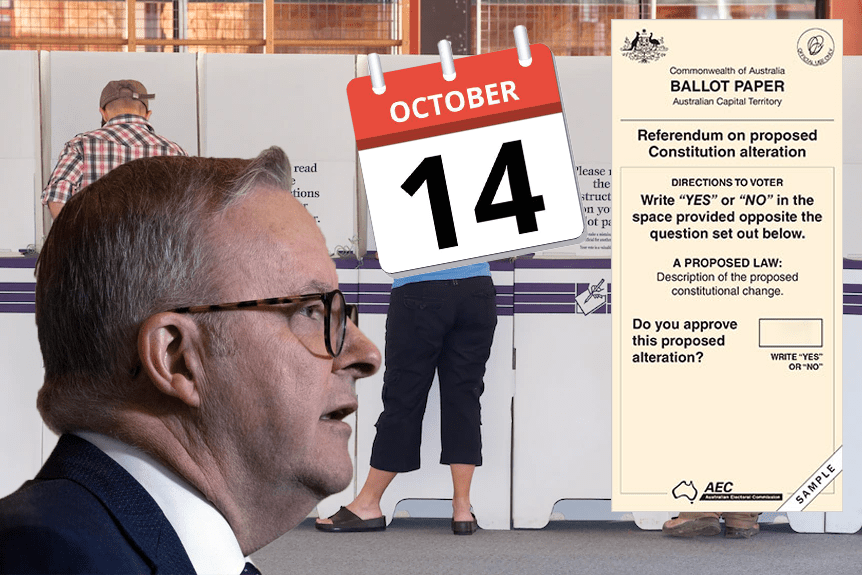From a Yes event in the suburb of Elizabeth, just north of Adelaide, Prime Minister Anthony Albanese this morning officially announced the date for the Voice to Parliament referendum.
“For many years, Aboriginal and Torres Strait Islander people have been advocating for constitutional recognition,” began Albanese, “now, my fellow Australians, you can vote for it.”
The Voice referendum will be held on October 14, 2023. This announcement will trigger a six-week campaign blitz from the Yes camp, which has recently been suffering in the polls.
Australians will be asked the following question at the polls:
A Proposed Law: To alter the Constitution to recognise the First Peoples of Australia by establishing an Aboriginal and Torres Strait Islander Voice.
Do you approve this proposed alteration?
Pollsters this week found that roughly 47 per cent of respondents intended to vote against the Voice, 43 per cent planning to vote Yes, and the remainder undecided.
The poll continues a downward trend for the Yes campaign — support for which has continued to deteriorate since its 82% peak in July of last year. However, key Yes campaigners remain hopeful that polls over the coming weeks will reflect a swing in their favour.
The Referendum (Machinery Provisions) Act 1984 dictates a minimum of 33 days between the issue of writs and polling day, and Albanese announcing the date has set the wheels in motion for a writ to be issued by the Governor-General.
The upcoming referendum will be the first in almost a quarter of a century, with the last being the unsuccessful republic referendum in 1999.
Voting in the upcoming referendum is mandatory. For those 18 or older, enrolling to vote is essential. The easiest way to do this is online at the AEC enrolment website. Voters can also check their enrolment details at the AEC website.
Australia has passed just eight of 44 referendums held since Federation.
Referendums have a high bar to pass in order to be successful, with a majority vote needed in most states and overall.
The most common place to vote is at a polling place. Polling locations haven’t been published on the AEC’s website yet, but polling booths are usually set up at schools, churches, community halls and other public buildings.
On voting day, polling places from 8am to 6pm local time. Voters must clearly write either ‘yes’ or ‘no’ (in English) on their ballot paper.
Read Honi’s position on the Voice here.





